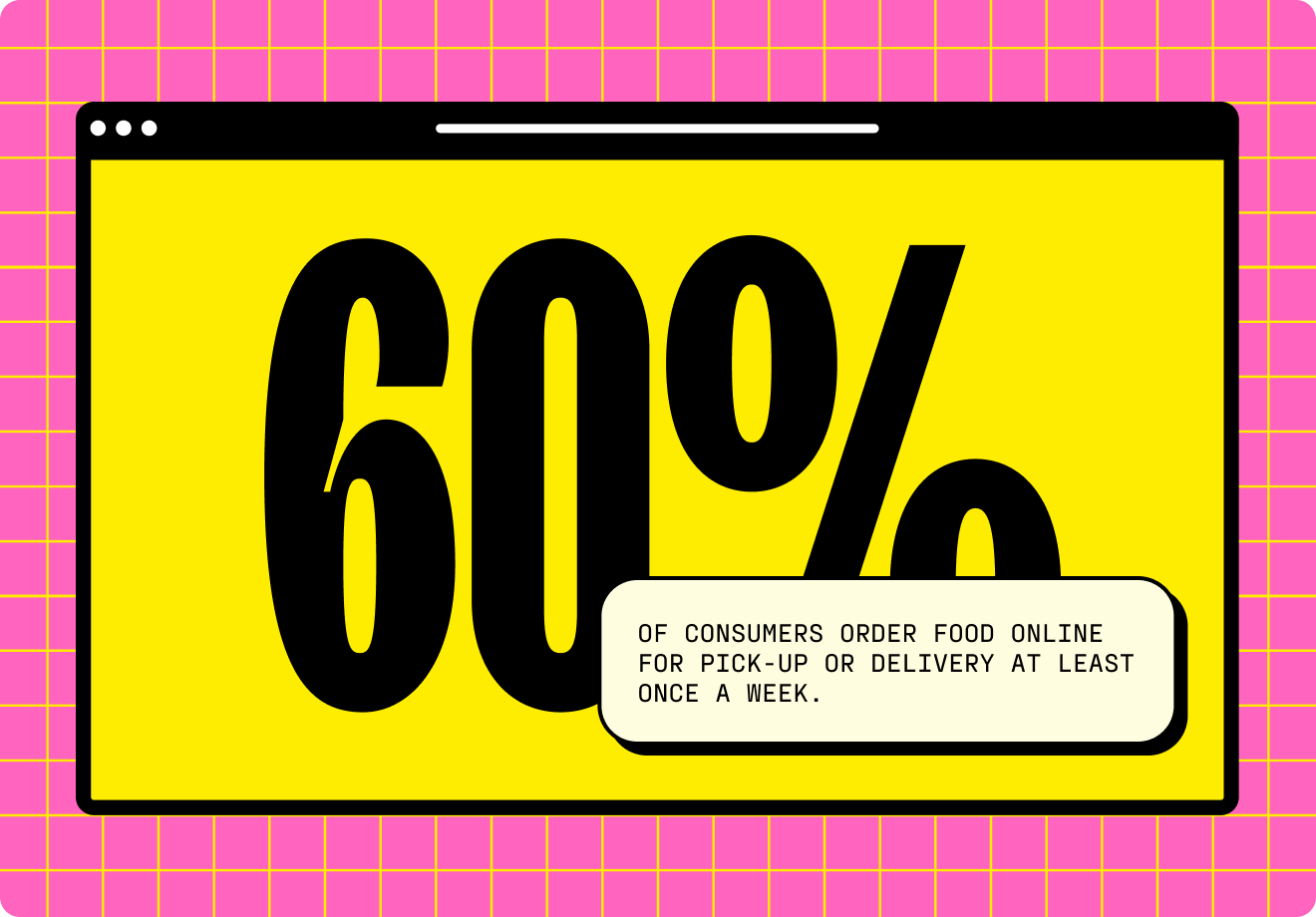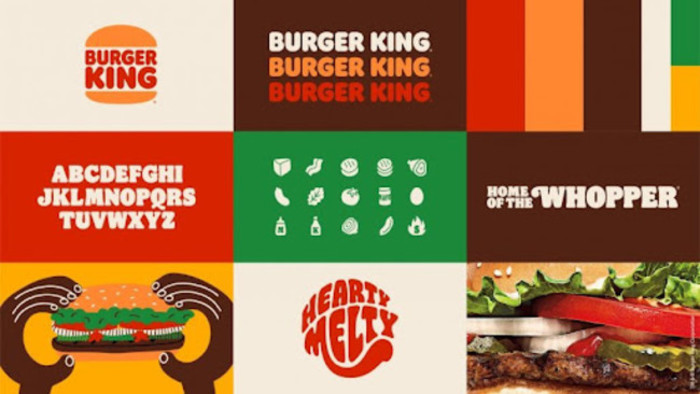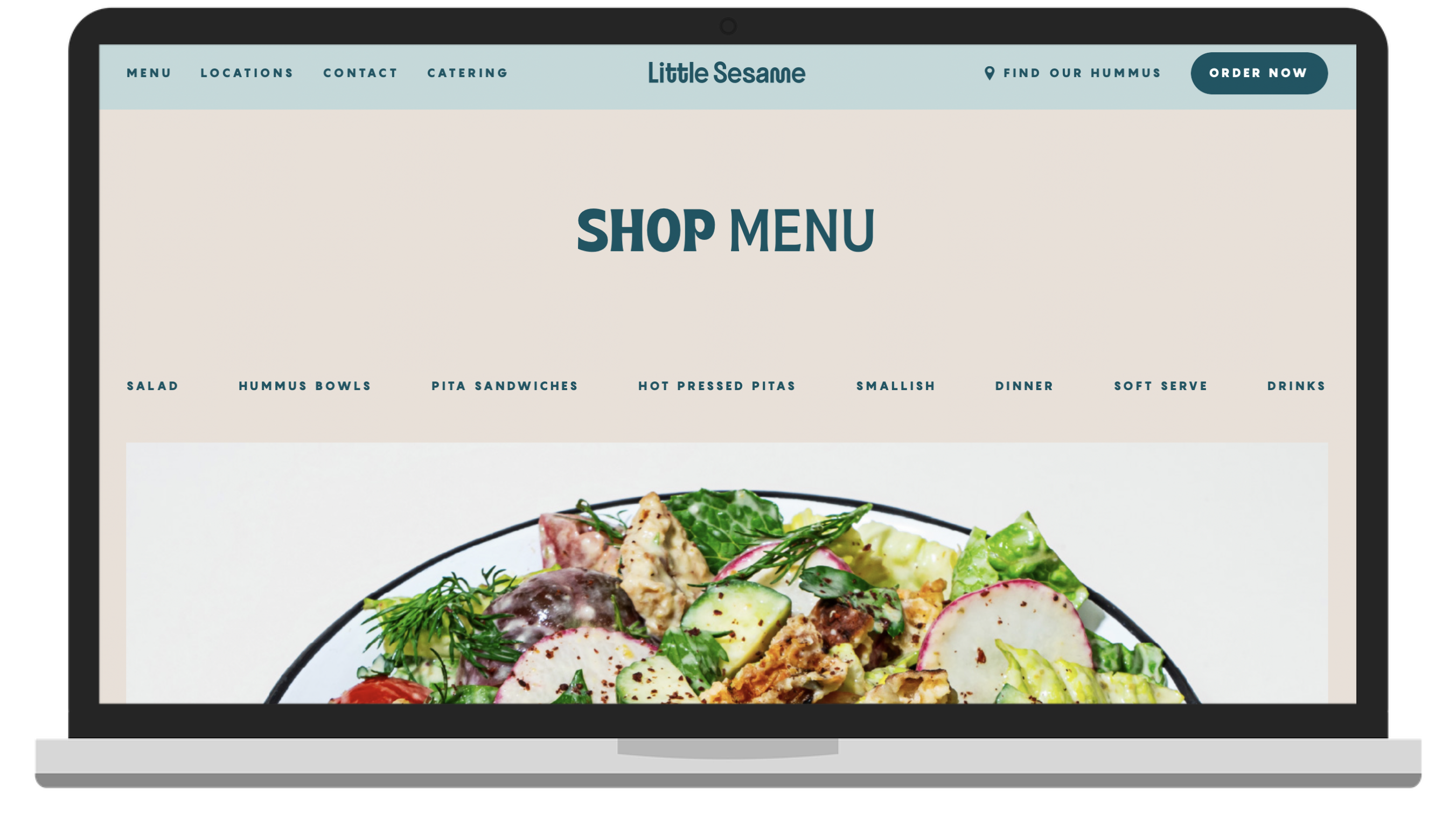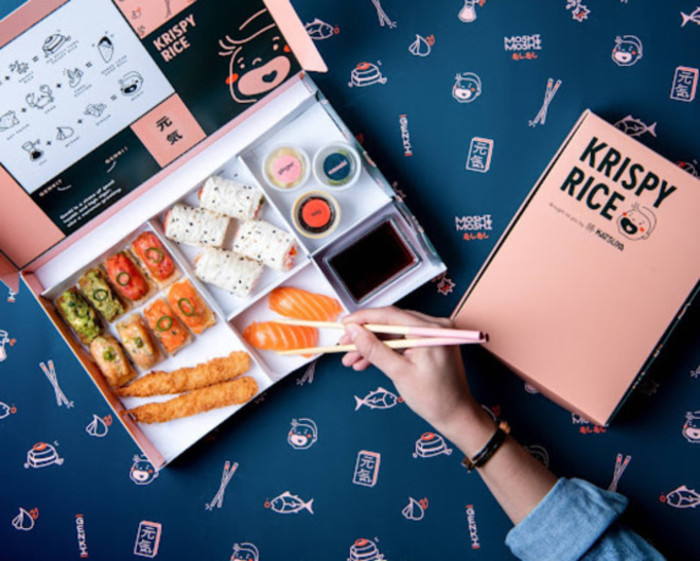“A basic tenet of marketing is understanding your market and those who you want to attract and creating a congruent brand personality,”
Share
- Jump to:
So you have your restaurant concept and all the backend strategy is taken care of; now for the fun part. It’s no surprise that the restaurant industry is competitive, both among brick and mortar establishments and digital spaces. With social platforms being the new way of digitally viewing a restaurant before investing into the customer experience, there is a demand in building out a full-scale branding strategy behind your restaurant operations.
Just like your food, your branding has to be enticing. Especially in the midst of a booming digital age, your restaurant's digital presence is just as important as the quality of its food and service. Offline marketing can create impact, but online marketing can pull in new customers and turn them into brand loyalists.
Defining Your Restaurant Brand
Let’s start with the fundamentals and build from there. Authenticity to your brand is one of the most important factors in aiding it’s longevity. Establishing what’s important to your restaurant’s identity will help your overall brand and marketing remain cohesive and genuine. This restaurant brand identity should always remain unified with your mission and values, brand personality, market and target audience. Let’s dive into each of these.
1. Mission & values.
The brand development process starts here. Answer the following questions, remaining authentic to your current and future vision for your restaurant brand:
What is this restaurant brand to you?
What do you always want to remain constant about your restaurant brand?
Why are you investing into this restaurant brand?
What are you hoping to accomplish with your restaurant brand?
How are you going to accomplish this while remaining inline with your missions & values?
Your answers should serve as defining factors behind your restaurant brand's core beliefs, values and ultimate purpose, cultivating your mission statement(s). Remaining authentic to your mission and values will be the selling point that segments you away from your competitors — it’s the compelling factor to your brand.
2. Brand personality.
Arguably the most important factor in your online restaurant marketing presence. This is the voice that is telling your story with strategy and uniqueness only specific to your restaurant brand. Using your mission and values as your starting point, get to the drawing board and configure a brand personality that makes sense to the current and future state of your brand and its products. This personality is something that your brand marketing manager is going to have to master in order to remain authentic and cohesive to your audience. Your brand personality will drive your most lucrative customer group — brand loyalists.
Need a good frame of reference to see where you are compared to some of the biggest fast-casual chains in the food space? Visit Zion and Zion’s Brand Personalities of the Top 26 Quick Service Restaurants.
3. Your market.
Identifying and studying your market is crucial in order to understand what's missing and what can be out-performed. Take this opportunity to study your direct competitors, looking into their habits, brand voice, food and service, online presence, brand loyalists and ways in which they go the extra mile.
Find your top 3 competitors and cross-compare the following:
Customer audience they are trying to reach.
Brand loyalists that are tagging and promoting them.
Visual and voice identity.
Social platforms they are utilizing; identifying platforms that perform the best and the ones they are putting more energy into.
Social platforms they haven’t capitalized on; invest more time into platforms that have audience groups that are up for grabs.
What you gain from your market research will be the defining factor in how you strategize your restaurant’s branding.
4. Your customers.
Your target audience within your branded strategy, whether online or off, will be your customers. Whether it’s new customers or recurring ones, your branding and content should be built with them in mind. Find out what your customers like, what they are wanting, their buying habits, and their reviews on restaurants similar to yours.
Knowing your customers will help you identify expectations that will come with experiencing your restaurant. Find out your demographic of customers and appeal to that audience through different realms of strategized marketing. Note that there are differences in both demographics and missions tied within audience distribution: revisit your brand's mission statement and values to better identify its paired audience.
Check Out This Guide:
CUSTOMER CONNECTIONS ON TAP: A GUIDE TO USING DATA FOR MARKETING
Develop Brand Identity for Your Restaurant
Your brand identity will be the first form of interaction between you and your audience within a digital space. With social platforms being the new form of discovery for customers to peruse brands, standing apart from your competitors in look and feel is vital for leaving a strong enough impression to warrant a visit and/or purchase.
Establishing a brand identity should remain consistent both, on and offline. It should always relate closely to your restaurant’s mission statement and values with your target audience in mind. Let’s break down some of the fundamentals to establishing a brand’s identity.
1. Brand voice.
A brand voice in an online format that has proven success in conversions, grabbing the audience's attention long enough to sell the product/service. Your brand voice should align with the restaurant's mission and appeal to your customers. This is the way to showcase your brand's personality, broken down into how the brand speaks and acts, as well as communicates with both existing and potential customers.
A good reference for a successful brand voice that’s otherwise known to be nontraditional is Wendy’s. Wendy’s adopted a very similar brand voice to their audience, identifying that an authentic and also viral-worthy brand voice might prove profits and relevance within the competitive fast-casual food industry.
“Wendy’s target demographic has never been a stodgy, high-class investment banker. They strategically target millennials and young professionals by working to position themselves as the hippest place to grab lunch.”
In order to identify a direction for your brand voice, break down your brand into a few adjectives to describe how your brand proves value to its audience. Different restaurants and companies may have vastly different brand voices and promote them successfully due to their audience’s needs being different.
2. Color palette.
Whether your customers are viewing your company’s social platforms, website or physical establishment, your brand's color palette is always at the forefront. There is a distinguishable linkage between brands and their color palette, built as a part of the brand’s personality.
“Research reveals people make a subconscious judgment about a person, environment, or product within 90 seconds of initial viewing and that between 62% and 90% of that assessment is based on color alone.”
Color theory plays a huge role that goes deeper than we think. And because a color palette plays a huge role on how your audience perceives your restaurant and/or brand, it's a great way to establish personality within the brand and tell a story to viewers.
3. Imagery.
This is where you want to grab your audience’s attention. Your imagery should best represent your restaurant brand and voice. Whether your assets are on your social platforms, marketplace or website, your digital imagery is the most compelling piece to your potential guests.
Your first impression is a big dictator of sales made — standing out from the already cluttered and competitive restaurant space is a must. This means every form of content going out online should be impactful and share a visual image of your offerings. Assess all your avenues for content and build from there.
Here are just a couple of important assets that your restaurant brand will want to entice with:
Physical elements: Think: your menu, bag tags, physical ads and/or table talkers.
Digital elements: Think: your website, food photography and/or social platform content.
![“When people hear information, they're likely to remember only 10% of that information [...] if a relevant image is paired with that same information, people retain 65% of the information.” Feed Me Content, Food & Drink.](https://images.ctfassets.net/erglja63hoxc/5IGelUOX88HfPVceA14N8C/7497b52da18718528ea8c68e5a72f40d/Feed_Me_Content_-_01.png)
Design Brand Elements.
Your design brand elements are your necessities. These are the design elements that your guests will know you most for. Think of McDonald's and their Golden Arches and Wendy’s and their twitter-sphere. Building out your sources of graphic design elements is crucial in showcasing your branding.
1. Logo.
Your restaurant logo is your brand wrapped up in one small graphic. Alongside your restaurant’s name, it can consist of a quick sub-copy about the brand, defining what type of restaurant it is. All elements of your logo design will impact your potential customers' perception of your brand. This is typically the first element your audience will consistently come in contact with, which is why there is a need to bring your brand's personality to life within it.
Revisit your brand voice and overall restaurant mission statement. Take this and really get to understand what your audience is drawn more towards. A restaurant logo is here to serve as a taste of what’s to come. Make sure it makes sense to your restaurant in both offerings and overall ambiance.
2. Website.
This part should never be neglected. The restaurant industry is in a crucial period of transforming and building up online presence. With now 60% of consumers ordering food online for pick-up or delivery at least once a week, it’s optimum to have a fully built-out customer experience for your guests. The easier it is to order, the better: sales.

“It’s estimated that up to 60% of consumers in the U.S. are ordering delivery or takeout at least once a week.” CloudKitchens.
Invest in a graphic design studio to build out a website that adheres to your branding and mission. This should include details from your story, to your menu, to your food photos and reservation details. Your website should be your brand's one source of truth for any question your guests might have, laid out in an aesthetic and comprehensive manner.
3. Social media.
It’s a key opportunity in both developing your brand and growing your customer base. With social platforms being the new form of first-impressions for many, the need for an enticing account is critical. There are different platforms for different audience groups, but the most important social platform to showcase your brand on is Instagram. Between its strong algorithm for both companies and boosted posts to its community growing and tag-ability, Instagram is the one-stop platform for all things branding. The most important factor for placement within Instagram, among other social platforms, is the design elements/photography and brand voice. Whichever platform you land on, make sure its audiences and purpose align with your restaurant's needs.
Some other social media platforms to look to for marketing your restaurant brand:
Twitter
Facebook
TikTok
LinkedIn
4. Physical elements.
This is where your design elements come to life. Between your menu, signage, business cards, takeout packaging and interior design spaces, there are many areas to showcase your brand’s personality. In the same way, you look at digital design elements, look at physical design elements: every piece of collateral should adopt the brand’s aesthetic with cohesion — from the brand voice to the designs and placement.
When creating your restaurant’s menu and signage, look to connect people to your food and offerings. The menu should be a great representation of the environment of the restaurant, with more explicitly behind it’s offerings. Bring in your color palette, typography and design elements into the menu, signage and interior design spaces, making all collateral and spaces effective for your guests.
Restaurant Brand Inspiration
We all have our favorite restaurant brands — here are a couple that mark off all of our boxes with proven success.
1. Wendy’s and their Twitter.
Wendy’s Twitter is nothing short of bingable and viral-worthy content. With a quick-witted social media manager that’s up to date on the fast-casual controversies, the restaurant chain is a marketing super-villain for competitors. In 2017, they moved their social strategy over to their current brand voice, engaging with more of their audience than ever before. The brand is a great example of adopting its audience’s voice, pulling in a community of brand loyalists.

2. Burger King and their Branding Elements.
Burger King’s branding captures a nostalgic impression from their glory days, the 70s. Their logo design, font choice, and color palette pulled their original fan base back into the burger brand, all while inviting the later generations into the same space through an urban modern twist.

3. Little Sesame and their Brand Identity.
Little Sesame is the brand to look to for all things cohesive and aesthetic. Between it’s website, app and social platforms, the brand is able to tell its story, mission statement and vision while spotlighting its tasty foods. The restaurant brand has garnered a cult-like following for guests seeking environmentally conscious, balanced ingredients.

4. Krispy Rice and its Physical Elements.
Krispy Rice is the restaurant brand to gather inspo for all things physical packaging. The Sushi establishment is known for their aesthetic and informative packaging, providing a luxe customer experience for all takeout orders. With cohesion in design elements being adopted from their digital designs to their physical packaging, this brand set itself apart in an often forgotten department.

Conclusion
With a competitive restaurant space and new forms of restaurant brands infiltrating the industry, the need for strong branding through every avenue becomes a necessity. From identifying your brand's mission, market and audience to building out all design elements, we hope this article supports you past the finish line in pushing your restaurant brand live.